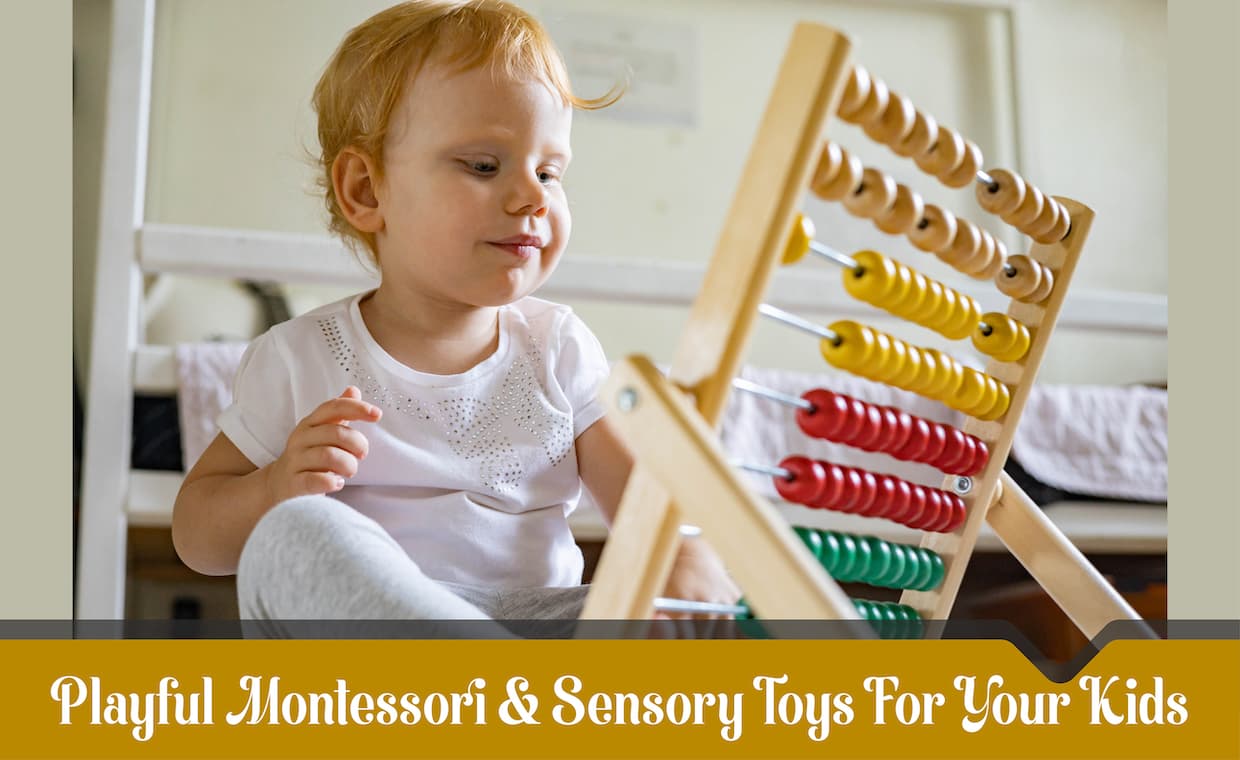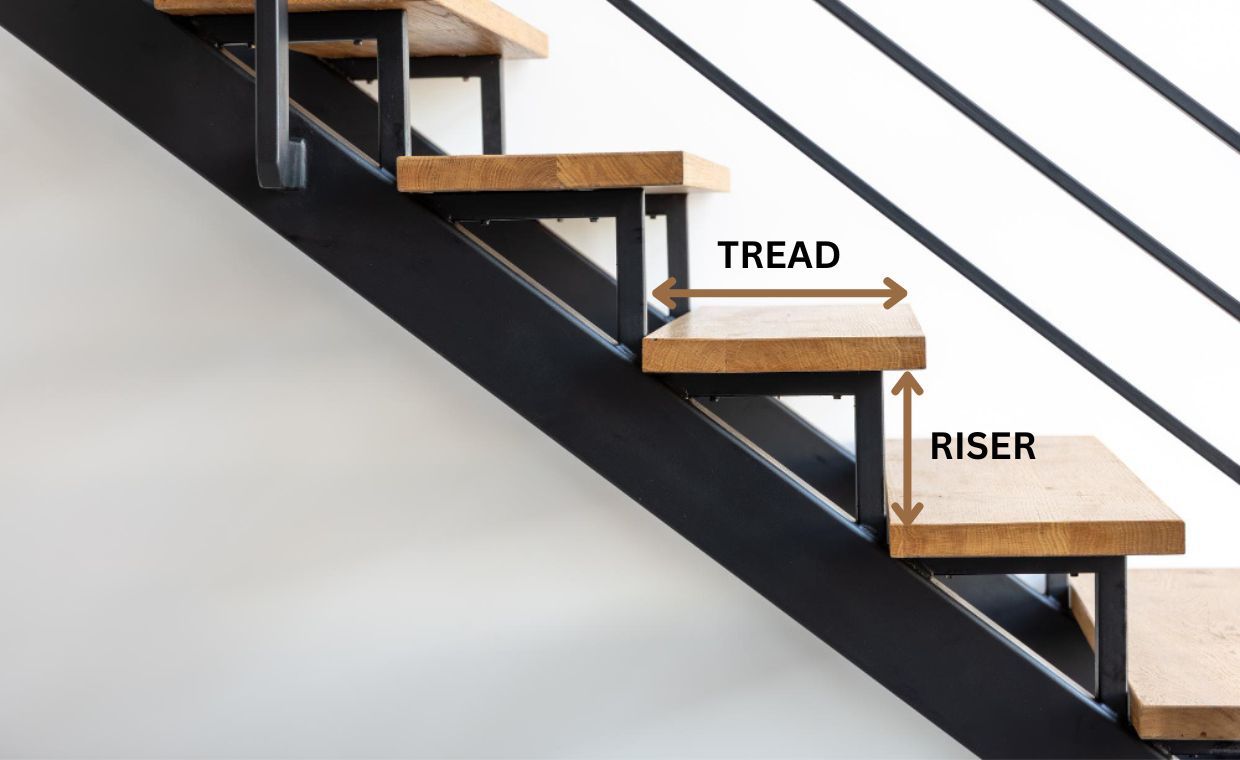
The Montessori methodology is over 100-years-old, yet it remains as relevant in the 21st century as it was back then. It relies on sensory-based learning tools, specially created by Dr. Maria Montessori to make learning interactive and engaging for young children. Like the ancient Indian Rishis or Gurus she recognized that young children learn through their senses of touch, smell, taste, hearing, and seeing. She set out to create learning-aids that would appeal to their senses. The tools developed by Dr. Montessori are the building blocks of learning and critical for acquiring conceptual knowledge. Like there can’t be an orchestra without musical instruments, there can’t be a Montessori classroom without Montessori toys.

The Montessori materials focus on a single sensory experience with engaging puzzle-like activities. They are colourful, fun, and inviting. It is easy for children to be engrossed in stimulating interaction with sensory materials.

There is a renewed interest in Montessori ideas among educators and parents alike because researchers and scientists have raised a red flag over unfettered exposure to screen from an early age. The advances in neurosciences support the need to provide a sensory learning experience to children till the age of 6 and restricting their screen time. It makes Montessori materials a proven option to purposefully engage children for their cognitive development. Most childcare staff training courses include comprehensive instruction on sensory learning, equipping educators with the knowledge and strategies to support young children’s cognitive, emotional, and physical development through hands-on, multisensory experiences that engage sight, sound, touch, taste, and smell.
What Makes Montessori Toys So Unique and Crucial for A Child’s Early Development?
- Specially designed for individual concept or skill
- In-built control of error mechanism
- Purposeful, interactive, and engaging
- Enable hands-on, individualized learning
- Simplify abstract concepts
- Develop fine motor skills
- Integrate practical life-skills
The unique features of Montessori toys and materials make them invaluable in developing qualities like independence, discipline, patience, or skills like logical thinking, problem-solving, concentration, and resilience. The self-correcting feature makes it possible for children to work independently without adult intervention and persist till they solve the problem on their own. Children learn to experiment and not be afraid of making mistakes and learning from them. It makes them determined and motivated to keep going till they get it right. While the tools like Montessori beads, number rods, Montessori wooden toys and many such types of equipment play a critical role in developing early literacy and numeracy, they are equally vital in developing real-life skills. The general life skills they learn prepare them to succeed in the rapidly changing and turbulent world we live in.

How to Use Montessori Toys and Material at Home
The Montessori learning tools are designed for individual rather than group activities, which allow the children to learn at their own pace. That, coupled with an in-built mechanism for correcting the errors, makes them ideal for in-home use with minimal adult supervision. Besides, Montessori preschools strive to resemble real “homes”, so many parents prefer using Montessori educational toys in the home environment.

The Montessori learning aids have varying degrees of difficulty. Children start with the easiest and gradually progress to the more complex material when they start learning a new concept. This linear sequencing paves way for a logical progression of learning as children gain mastery of simple material before tackling more complex materials. Parents using Montessori materials at home need to keep in mind as they incorporate Montessori ideas for homeschooling.
The Montessori toys are durable as they have to withstand use by children and last for many years in the school environment. Children at Montessori schools receive a full range of proven, tested materials in four primary areas: language, mathematics, practical life, and sensory development.
What Montessori Toys Should I Select for Homeschooling?
The task of choosing the right Montessori learning toys for homeschooling could be overwhelming for any parent. It is neither possible nor recommended by experts to replicate a Montessori classroom at home. But there are plenty of Montessori toys and materials suitable for use at home, and many can easily be created at home by parents. Here is a selection of materials in each category that are suitable for homeschooling.
Practical Life Materials
Have you ever thought how interesting it is that children can even help you with household chores? The Montessori activities for 2-year-olds can be carried out by using child-size tools that allow children to imitate actual tasks performed by adults, such as cleaning, sweeping, gardening, washing and drying clothes, cooking, setting up a table etc. These materials foster responsibility towards family, independence, problem-solving, hand-eye coordination, and a love for physical activities.
Let us have a look at the Montessori toys for 3-year-olds, through which children can perform tasks done by adults at home and are interesting for them.
01. Cloth Pegs
The cloth Pegs are the primary material that you need to dry your clothes. All you can do is keep your child busy drying clothes in a small rack. This would help them to have strong fingers and also be playful by choosing pegs of different colours.

02. Scoop
We often see children playing in the backyard or fields. Making them learn the use of scoop can strengthen their hands and activate the nerves in their minds.

03. Dust Pan
Usually, a child-sized dustpan promotes the cleaning habit in kids, and along with playing, they can get a learning exposure to cleanliness.

04. Feather Duster
The feather duster attracts children due to its look and helps children to adopt practical life skills by using it.

05. Rolling Pin
The use of a rolling pin not only helps kids grasp cooking techniques but also stimulates their minds and adds flexibility in working with their arms.

06. Whisk
The whisking action is great exercise for wrist movement and also familiarises the basic motoring mechanism in toddlers and children.

07. Apple Divider
Apple Divider requires a good amount of pressure to be applied for cutting the fruit. Eventually, this will lead a child’s brain to understand the work by keeping safety precautions in mind.

08. Potato Peeler
We use a potato peeler very often in the kitchen. The kids can be put on the duty of peeling potatoes using a peeler because this task can help them develop command over the hand muscles and the bones.

09. Mini Bucket
The buckets are very easy to handle for adults, but carrying the mini buckets with some weight fixes the potential holding and lifting capacity in the child.

10. Sand Shovel
Playing in the sand is the best part of childhood, but do you know this can also upgrade your child’s sensory. When a child exerts his energy in pulling the sand through a sand shovel, the brain demands the focus and coordination between human organs and the nervous system.

11. Sand Sieve
While playing with a sand sieve, the basic knowledge of particle size is understood by the children, and they gain confidence in their judgement about when to start and when to stop.

12. Garden Set
Well, gardening is always fun. Keeping your kids engaged in the garden will make them learn how to use all the tools wisely. This also makes them sharp and alert.

13. Montessori Dressing Frame
The Montessori technique also includes the life learning etiquettes to make children independent and self-sufficient in their work. The key Montessori practical life material is commonly known as the Dressing Frame. It promotes independence in children. In other words, along with fun, toddlers can learn basic life skills and work. Generally, these Montessori learning kits are a kind of frame that is made up of wood and is supported from all four directions.
Moreover, the Montessori dressing frame also leads to effective coordination between hand and eyes as it brainstorms the sensory organs of the children. Now, let us have a brief look into the same.

Sensory Toys and Materials
Sensory toys and sensory materials focus on concepts learned through the senses, such as taste, smell, touch, colour, sound, size, weight, and so on. Parents can prepare many of these resources at home and teach concepts from their daily life experiences. They must provide the correct terminology for them as in rough and smooth to touch, big, medium, and small, or sweet, salty, and sour for taste.

14. Box of Colour
The box of colour sequentially introduces primary colours – red, yellow, and blue followed by secondary and tertiary colours – orange, green, blue, brown, pink etc. It develops their ability to distinguish colours and use the language of colours to describe the objects around them.

15. Circles, Squares and Triangles
A set of circles, squares, and triangles introduces the concept of geometric shapes and enables children to relate everyday objects to these geometric shapes.

Cylinder Block
The cylinder blocks are the tools for children to visually discriminate size as they learn to insert cylinders of different diameters in the right-sized hole.
The Red Rods
The red rods develop visual discrimination of length. Starting with a 10 cm long wooden rod, each subsequent rod increases by 10 cm, with the last rod being 1 meter long.
Pink Tower
A pink tower is a set of three-dimensional cubes that allows children to visually discriminate the size of 3-D objects.
16. Numeracy
These materials can easily be made at home using thick cardboard and coloured glazed or chart paper.
Number Rods
The number rods are a versatile tool for children to learn the concept of quantity 1-10 and their associated names. The material helps the children learn to count up to 10, laying the foundation for basic arithmetic.

Sandpaper Numerals
The sandpaper numerals are a unique way to introduce the symbols and their names for numbers 0-9. Children also learn to write numbers as they trace the sandpaper numerals with their fingers in the direction of writing.
Cut–Out Numerals and Counters
With the help of this material, the child learns to associate quantity with the correct symbol by first identifying and placing the numerals in their proper sequence and then placing the corresponding number of counters next to them.

Nowadays, the trend in using sensory toys has increased among parents and also in kindergarten and playschools. A variety of toys are available in the market. Here are a few popular sensory toys amongst the kids and people.
17. Wooden Sensory Board
The wooden sensory board develops the understanding of various locking systems that is used in our homes and everywhere in practical life.

18. Balance Board
Balancing games always excite children. But now, you don’t need to walk to the gardens and park for a balancing game. Simply own a balancing board and let your child play with it.

19. Fidget Sensory Toys
When the time comes to play with fidget toys, it is way similar to solving any puzzle, as it demands more concentration and sharpens the brain.

20. Textured Balls
We always notice that children have a habit to hold any object near to them. At this time, placing textured balls in front of them will be way more interesting than any common toy as textured balls give power to the fingertip and increase their grabbing capacity.

21. Fiddle Toy
The craze of fiddle toys is not only observed in kids, but it is popular amongst adults too. It is helpful in increasing concentration power.

22. Fidget Bubble Toy
The Fidget Bubble toy can be found everywhere in the market and it is suitable to maintain the attentive ability of the children and it also reduces stress.

Conclusion
It is a fact that the pandemic has disrupted the learning cycle for children of all ages, but the worst affected are the preschool children, who have lagged in their overall development due to confinement to home. However, this has also allowed parents to be closely involved in their child’s homeschooling and track the development of the child. There is no better investment for parents at this time than investing their time and resources in Montessori ideas and sensory toys to not only keep their child purposefully engaged, but also to keep their learning at a pace that corresponds to their development. After all, home is the first centre of learning for a child!
To keep your child healthy, make sure that the environment and flooring in your home are child-friendly and appropriate. Here we provide you with ways to look after flooring tips if you have children at home.
Author Bio
Anshu Sachdeva – Anshu Sachdeva is the founder and business head of boutique research and content firm based out of India. She has over ten years of corporate experience in consulting and research. She holds a masters degree in business management and is passionate about the application of research to do business faster, better, cheaper.






























